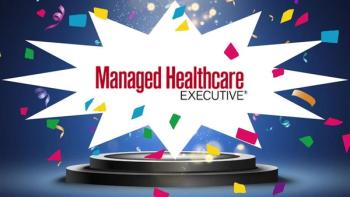
Four Things to Know About Providing CAR T-Cell Treatment
Top oncology experts share how they deliver these therapies to patients in need.
Michael Bishop, MD, professor of medicine and director of the cellular therapy program at
“Nobody likes to watch a patient die, so trying to provide that opportunity for a cure…trying to set this up,” Bishop says. This was easy. It was a work of love. I’ve never used that term at work before.”
Bishop pushed to get UChicago Medicine involved in clinical trials for Kymriah (tisagenlecleucel) for treating children and young adults with an untreatable form of acute lymphoblastic leukemia and Yescarta (axicabtagene ciloleucel) for use in adults with certain types of non-Hodgkin lymphoma.
Kymriah received FDA approval in August 2017 for the treatment of patients up to 25 years of age with B-cell precursor acute lymphoblastic leukemia that’s refractory or in second or later relapse. In October 2017, FDA approved Yescarta for adult patients with relapsed or refractory large B-cell lymphoma after two or more lines of systemic therapy.
Acute lymphoblastic leukemia accounts for less than half of 1% of all cancers in the United States,
What follows is advice from Bishop and other experts for healthcare executives who want to deliver these therapies.
1. Make a strong case to the C-suite
First, think about what’s important to your executive team, says Luca Capicchioni, program manager for stem cell transplant and cellular therapy at UChicago Medicine. “They’re probably fielding hundreds of requests-very frequently for more resources-so you have to think about this from their perspective.”
Academic medical centers should make a strong case about the research and teaching possibilities with providing CAR T-cell treatment, he advises. That’s in addition to the impact on patient care.
Parameswaran Hari, MD, hematologist/oncologist and chief of the hematology and oncology division at
2. Be clear about your mission
“It’s not about developing a new therapy,” says Bishop at UChicago Medicine. “It’s not just another infusion or another chemotherapy. It’s about transforming the entire patient process, from the moment they get on the phone or they’re referred by their physician through survivorship.” It’s important to make sure that everyone-such as the nurses and the intake team-knows that the healthcare organization is providing CAR T-cell therapy and what these teams must do to support patients, he adds.
Related:
- Build the infrastructure around treatment and recovery. Hari says provider organizations must set up the infrastructure to ship and store cells, which need to be infused into the patient after being thawed out. In addition, clinicians must determine how to respond to and treat the complications associated with CAR T-cell therapy, and that involves training clinicians, he adds.
Providers also need to secure accreditation by the
A point of encouragement from Hari of Froedtert? Facilities that have already received accreditation to provide stem-cell treatments have some of this infrastructure already in place.
- Preparing to treat rare, serious side effects. Most patients undergoing CAR T-cell therapy experience a better quality of life than receiving chemotherapy, Nabil Saba, MD, director of the head and neck medical oncology program at the
Winship Cancer Institute of Emory University ,told Managed Healthcare Executive.
While there’s a reduced chance of side effects with CAR T-cell therapy when compared with chemotherapy, serious side effects do occur, he added. Serious side effects can include liver failure, activation of an autoimmune disease, colitis, or death.
Treating these side effects requires the oncology team to establish good relationships with intensive care, neurology, infectious disease, and pharmacy teams, says Lizamarie Bachier, MD, professor of medicine at
At Montefiore Medical Center in the Bronx, New York, the minimum required stay for patients receiving CAR T-cell treatment is two weeks. That’s because most of the patients who experience a toxicity associated with the treatment do so within two weeks.
The toxicities associated with CAR T-cell therapy can be adequately managed, says Bachier. To respond, oncology providers must ensure that clinicians have guides for managing the toxicities, particularly in the emergency department. Pharmacy colleagues also need to make available steroids and tocilizumab (Actmera), which is indicated for the treatment of CAR T-cell-induced severe or life-threatening cytokine release syndrome in adults and pediatric patients 2 years of age and older,
Aine Cryts is a writer based in Boston.
Newsletter
Get the latest industry news, event updates, and more from Managed healthcare Executive.





















































